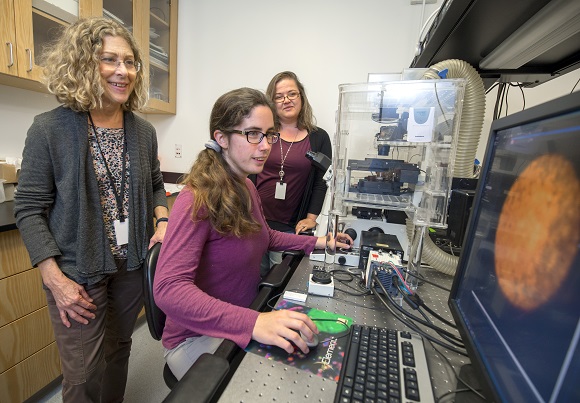DISCLAIMER
The information and materials accessed through or made available for use on any of our Sites, including, any information about diseases, conditions, treatments, or medicines, are for informational purposes only. The Content is not intended to be and is not a substitute for professional medical advice, diagnosis, or treatment, and your participation on our Sites does not create a healthcare professional-patient relationship. You should consult a doctor or other qualified health care professional regarding any questions you have about your health or before making any decisions related to your health or wellness. Call your doctor or 911 immediately if you think you may have a medical emergency.compose your message
message sent
email sent successfully
Trusted Resources: News & Events
Latest announcements and gatherings
Healthy red blood cells owe their shape to muscle-like structures
Red blood cells are on a wild ride. As they race through the body to deliver oxygen, they must maintain a distinct dimpled shape—and bounce back into form even after squishing through narrow capillaries. Red blood cells that can’t keep their shape are associated with diseases like sickle cell anemia.
In a new study, Velia Fowler, PhD, and her lab at The Scripps Research Institute report that a protein called myosin IIA contracts to give red blood cells their distinctive shape. The findings, published this week in the journal Proceedings of the National Academy of Sciences, could shed light on sickle cell diseases and other disorders where red blood cells are deformed.

 +myBinder
+myBinderRelated Content
-
people & placesOswaldo L. Castro, MDDr. Oswaldo Castro is Professor Emeritus...
-
education & researchHealth Care Utilization Trajectories and Associated Factors for Transitioning Adolescents/Young Adults with Sickle C...Limited research had explored health car...
-
people & placesSohail Rana, MDDr. Rana is Professor of Pediatrics at H...
-
news & events2022 PCORI Annual MeetingThe PCORI Annual Meeting brings together...
-
education & researchTreating sickle cell disease by targeting HbS polymerizationAlthough the root cause of sickle cell d...
-
people & placesChildren’s National Health SystemSickle cell disease affects many familie...
-
news & eventsProdigy’s death shines light on slow progress against sickle cell diseaseThe death of the rap artist Prodigy (Alb...
send a message
To improve your experience on this site, we use cookies. This includes cookies essential for the basic functioning of our website, cookies for analytics purposes, and cookies enabling us to personalize site content. By clicking on 'Accept' or any content on this site, you agree that cookies can be placed. You may adjust your browser's cookie settings to suit your preferences. More Information
The cookie settings on this website are set to "allow cookies" to give you the best browsing experience possible. If you continue to use this website without changing your cookie settings or you click "Accept" below then you are consenting to this.
Support for this site is provided by

This platform is made possible through a partnership with the Sickle Cell Disease Association of America, Inc. (SCDAA) and its member organizations. SCDAA's mission is to advocate for people affected by sickle cell conditions and empower community-based organizations to maximize quality of life and raise public consciousness while advancing the search for a universal cure.




